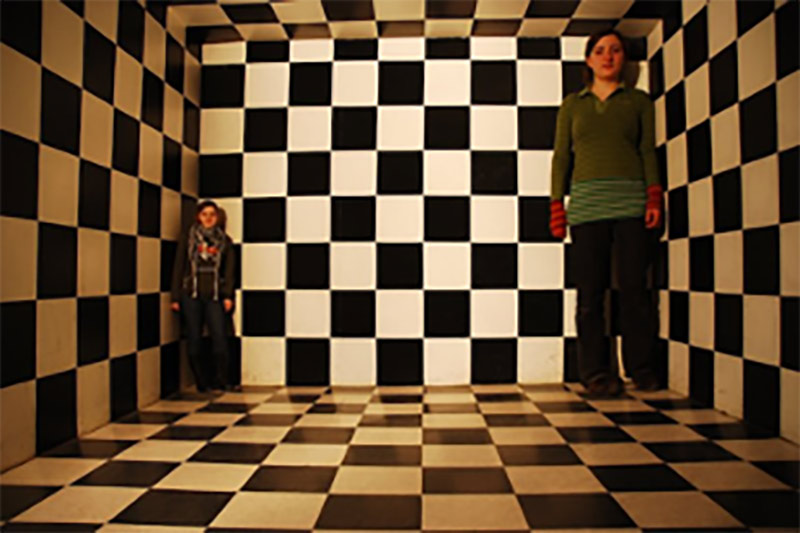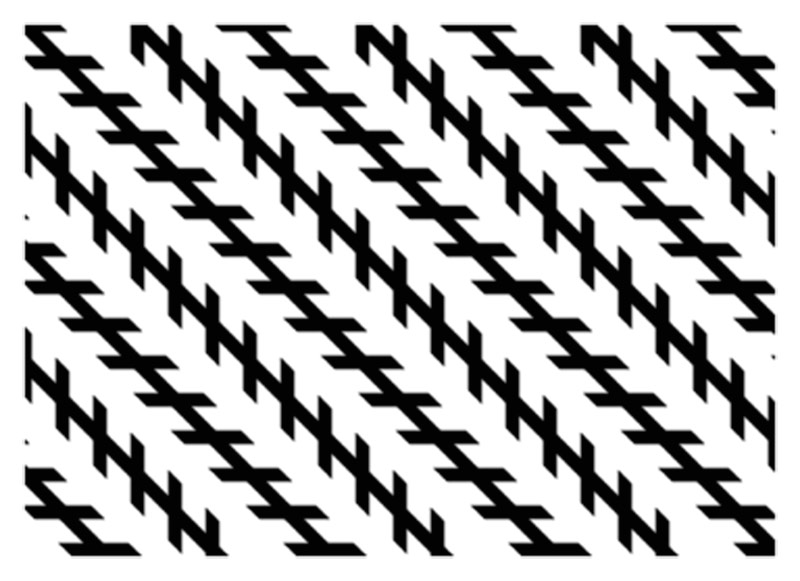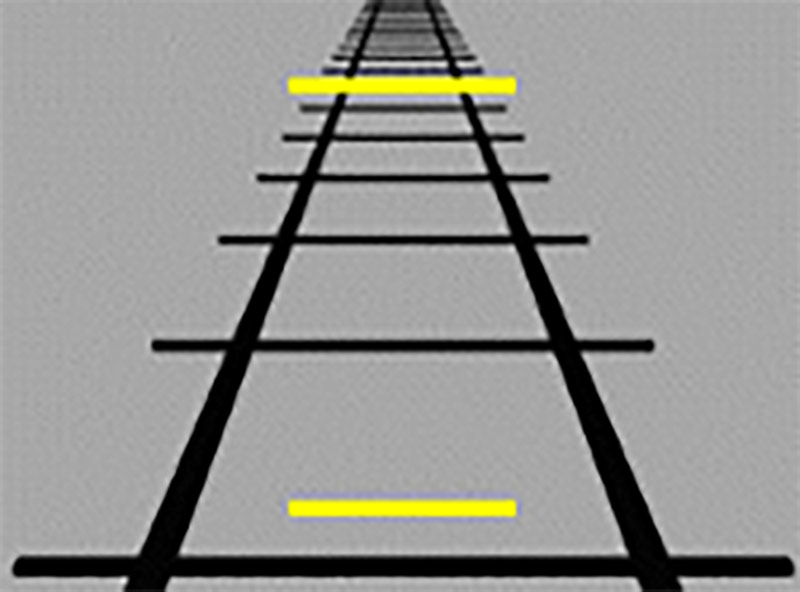By Linda Conlin, Pro to Pro Managing Editor

Recently I heard about the Paradox Museum in Las Vegas, a place that invites us to “experience the impossible” using many types of optical phenomena. Meaning ‘contrary to expectation’ or ‘incredible’ in ancient Greek, the word paradox has come to mean opposite or contradictory to common sense. In other words, what the senses perceive may differ from the brain’s perception.
Optical phenomena occur when visual processing in the brain results in perception different from physical reality. The brain looks for known patterns in ambiguous information for perception. One example is the Ames room. Invented by ophthalmologist Adelbert Ames, Jr. in 1946, The room is a trapezoid designed to appear square. The brain assumes that walls attach to one another at right angles and changes its perception of the size of objects rather than the room.
In the Zӧllner illusion, the brain overestimates the angles formed by the short lines that evoke a perception of depth. As a result, the lines appear to be somewhat oblique. The illusion consists of a series of parallel, black diagonal lines which are crossed with short, repeating lines, and the direction of the crossing lines alternates between horizontal and vertical. This creates the illusion that the black lines are not parallel. The shorter lines are on an angle to the longer lines, and this angle helps to create the impression that one end of the longer lines is nearer to the viewer than the other end.

In the Ponzo illusion, size perception depends on depth cues. When depth is given to a two dimensional image, we misjudge the size of an object within the image. In this example, the upper line looks longer because we interpret the converging sides according to linear perspective as parallel lines receding into the distance, but the yellow lines are actually the same length. In this context, we interpret the upper line as though it were farther away, so we see it as longer – a farther object would have to be longer than a nearer one for both to produce retinal images of the same size.

These are only a few examples of what you can see and experience at the Paradox Museum and their worldwide franchises, Museum of Illusions. In the realm of optical illusion and phenomena, the link between the eye and the brain is the key to perception. In spite of the image relayed by the eye, the brain anticipates motion and can be distracted, as well as having to make sense of ambiguous information. Essentially, the eye provides, the brain decides.












